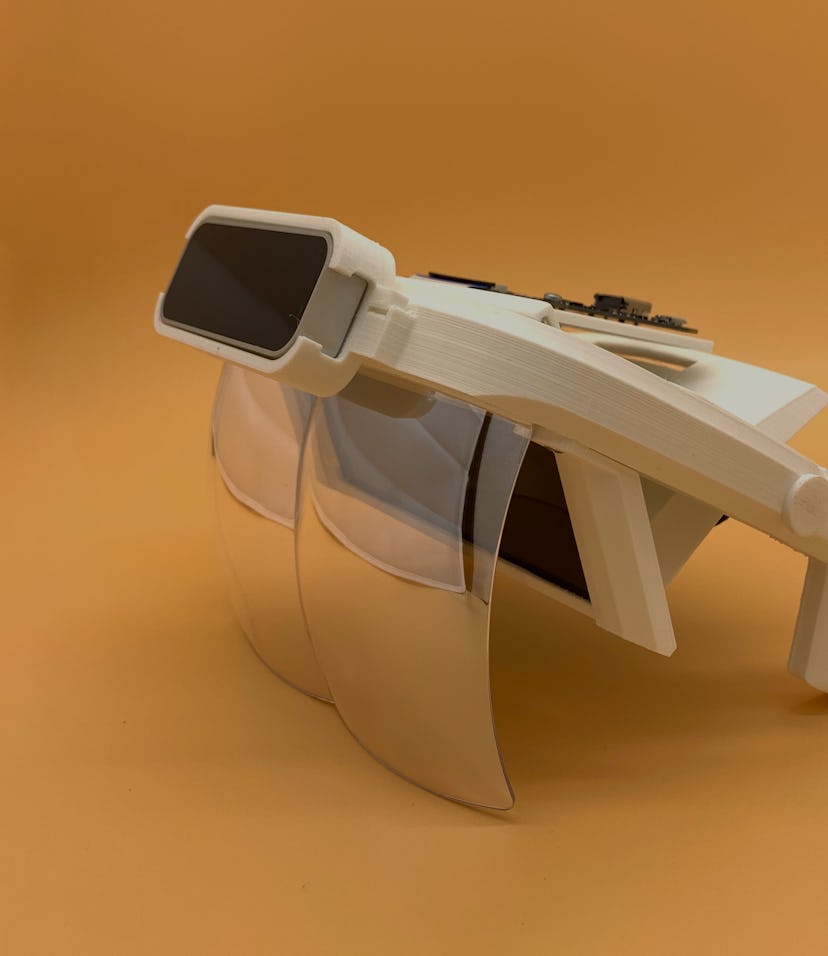Tech
This guy made an AR headset using off-the-shelf components
The Triton Project includes everything you need to make your own augmented reality headset on the cheap.

Augmented reality (AR) headsets are still a ways off in terms of affordability and consumer-focused features, but there's no doubt they're coming. Facebook is working on a pair in partnership with Ray-Ban that's set to launch next year, and another pair its testing in-house. Microsoft and Google already offer headsets for business applications. And Apple has its ARKit and is reportedly building a headset of its own.
What if you want to experiment with AR but don't want to buy a costly Hololens headset or support a closed platform? You make it yourself, of course.
Roll your own — Fortunately, advanced sensors and display hardware have become so cheap that it's possible to build your own rig and start playing around. College student Graham Atlee did just that and released his creation on GitHub so anyone with an idea for an AR project can put together a headset on the cheap using readily available bits and pieces.
The Triton Project includes schematics for a 3D-printed headset and a desktop app for launching AR content onto the headset. Atlee included a full bill-of-materials including sites where you can buy the hardware you can't print, like the LCD screen and head strap. The headset takes input using a Leap Motion sensor for hand-tracking, and content is overlayed in your field-of-view by angling the screen towards two pieces of reflective plastic.
Atlee told Input that he hopes the Triton could become the go-to headset for hackers and developers to experiment with cutting edge ideas free from the restrictions of Oculus or another proprietary platform.
By making the Triton an open-source project, Atlee thinks he can help kickstart an open ecosystem for AR. "I wanted to give people the ability to create an AR headset from the ground up that doesn't require a laboratory with billions of dollars in funding," he says. That's probably a good thing considering Facebook bought the best mixed-reality tech out there and wants to lock it behind Facebook accounts so it has control over the AR and VR platforms of the future.
The impending AR revolution — A big challenge holding back AR has been making the headsets small and unassuming. Most high-end solutions like the Magic Leap One or Microsoft HoloLens are bulky and unattractive, certainly not something you'd wear out and about. The North Focals were small but just displayed notifications from the wearer's phone; they didn't have a camera and could only receive input from a ring worn by the user.
Facebook claims that its AR glasses will be as comfortable to wear as regular glasses. The tech is almost there and, once it is, applications like heads-up navigation and gaming will doubtless become commonplace. But Atlee's project is a great, open-sourced solution for anyone who wants to start working on those ideas right now without shelling out hundreds of dollars for a ready-made product or supporting a closed ecosystem like Facebook. The Triton Project shows a potential way forward for AR where profit incentives don't limit what's possible based on a corporate agenda and need to please investors.
In the future, Atlee hopes to update the Triton to make it more comfortable and integrate more sensors. You could help him do that if you're so inclined.